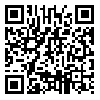BibTeX | RIS | EndNote | Medlars | ProCite | Reference Manager | RefWorks
Send citation to:
URL: http://mjiri.iums.ac.ir/article-1-49-en.html
Abstract
Background: Far lateral discal herniation is an uncommon disorder and is difficult
to assess by physical examination alone. This study is designed to define clinical and
epidemiological findings and to establish the indications of surgical and medical treatment for FLLDH.
Methods: Between 2000 and 2005, a total of 2035 patients with lumbar disc herniation
underwent surgical discectomy by the authors in several neurosurgical centers
in Mashhad. Among these patients, 63 (3.1%) had FLLDH (42 men and 21 women).
Clinically these patients had unilateral radicular pain with or without paresis. SLR
was positive in 100% of cases. Conservative therapy consisting of bed rest, nonsteroidal
anti-inflammatory drugs and physiotherapy had failed. We used a combination
of classical interlaminar approach and the intertransverse route through a midline approach for the treatment of our patients.
Results: From 63 cases in our series, 42 were men and 21 were women. 19 patients
had extraforaminal and 44 had foraminal disc herniation. The most common level for
far lateral discal herniation was L4-L5. Our patients had LBP in 43.6% (27 cases) and
positive SLR and radicular leg pain in 100% (63 cases). In all patients leg pain was relieved immediately after surgery.
Conclusion: FLLDH should be considered in all cases with lower limb radiculopathy.
These patients have more severe radicular pain than patients with paracentral
lumbar disc herniation. FLLDH happens more frequently at L4-L5 and L3-L4 levels.
It can often be difficult to diagnose or easily overlooked on radiographic studies. In
almost all cases, conservative treatment is unsuccessful and surgical treatment is recommended.
| Rights and permissions | |
 |
This work is licensed under a Creative Commons Attribution-NonCommercial 4.0 International License. |





